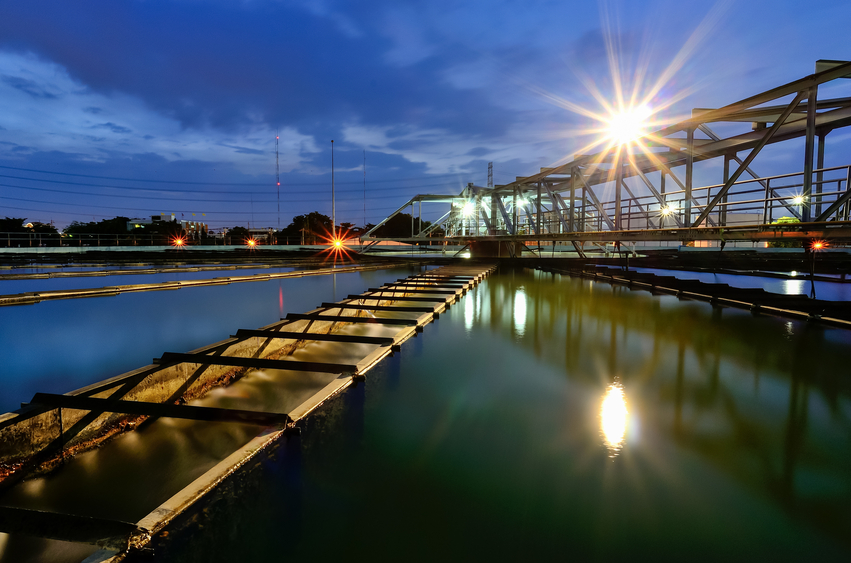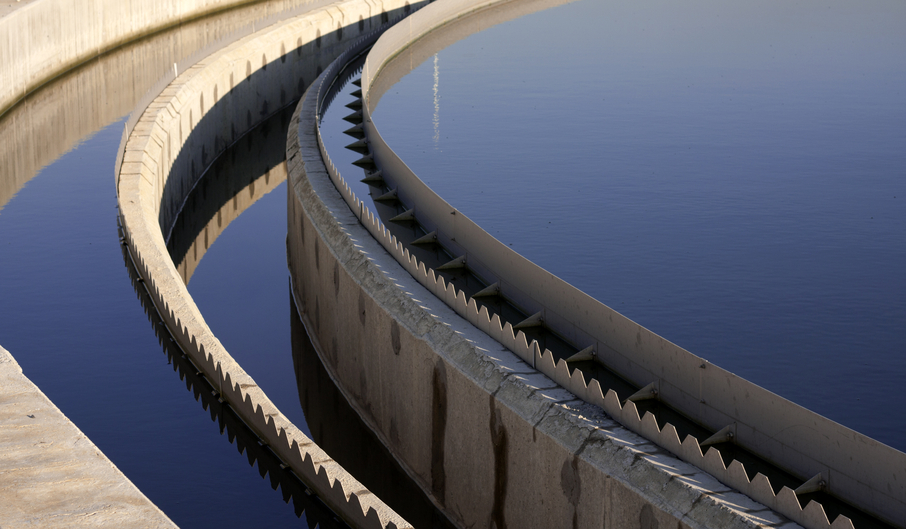Minnesota Wastewater and Ethics 24 PDH Discount Package 1
Wastewater Treatment System Performance Requirements (C08-003)
Biological Wastewater Treatment II - MBBR Processes (C04-045)
An Introduction to Advanced Wastewater Treatment (C04-020)
Pressure and Gravity Sewers (C02-068)
Engineering Ethics for Minnesota Professional Engineers (MN2-002)

This online engineering PDH course provides an overview of wastewater treatment technologies that are applicable to the treatment of oil and gas extraction wastes used at centralized wastewater treatment (CWT) facilities managing these wastes.
The exploration, development and production of oil and gas reserves vary markedly from region to region. There are a number of solid and liquid waste materials generated during oil and gas exploration, extraction and production, and these waste materials may be managed by CWT facilities. The nature and characteristics and quantity of the wastes generated depend upon a number of factors, such as the type of drilling, the characteristics of the formation, the depth of the well and the type and quantity of chemical additives used during drilling, production and well maintenance activities.
CWT facilities that manage oil and gas extraction wastewaters use a variety of treatment technologies, depending on characteristics of the wastewater received and the treatment objectives.
This 4 PDH online course is intended for chemical, petroleum, environmental and industrial engineers as well as other interested in learning about the wastewater treatment technologies that are used at CWT to treat oil and gas extraction wastewaters.
This PE continuing education course is intended to provide you with the following specific knowledge and skills:
- Familiarizing with the following waste treatment technologies: chemical precipitation, filtration/flotation/ sedimentation and crystallization
- Understanding the following technologies: evaporation/condensation, reverse osmosis, and biological treatment
- Learning about the cost considerations of the listed technologies
- Understanding the capabilities and limitations of the listed technologies
Upon successful completion of the quiz, print your Certificate of Completion instantly. (Note: if you are paying by check or money order, you will be able to print it after we receive your payment.) For your convenience, we will also email it to you. Please note that you can log in to your account at any time to access and print your Certificate of Completion.

This online engineering PDH course outlines essential steps for characterizing wastewater flow and composition and provides a framework for establishing and measuring performance requirements. It also describes methods for establishing and ensuring compliance with wastewater treatment performance requirements that protect human health, surface waters, and ground water resources. Furthermore, it describes the characteristics of typical domestic and commercial wastewaters and discusses approaches for estimating wastewater quantity and quality for residential dwellings and commercial establishments.
In addition, this course identifies the pollutants of concern in wastewaters and discusses the fate and transport of these pollutants in the receiving environment. It also presents the various technical approaches for establishing performance requirements for onsite systems, based on risk and environmental sensitivity assessments. Finally, it discusses performance monitoring to ensure sustained protection of public health and water resources.
This 8 PDH online course is applicable to civil, and environmental engineers, as well as design and construction personnel involved with the planning, selection and design of subsurface wastewater infiltration systems.
This PE continuing education course is intended to provide you with the following specific knowledge and skills:
- Estimating wastewater characteristics
- Estimating wastewater flow
- Understanding wastewater quality
- Minimizing wastewater flows and pollutants
- Integrating wastewater characterization and other design information
- Determining the transport and fate of wastewater pollutants in the receiving environment
- Establishing performance requirements
In this professional engineering CEU course, you need to review Chapter 3 of the USEPA Onsite Wastewater Treatment Systems Manual, EPA/625/R-00/008, "Establishing Treatment System Performance Requirements".
Upon successful completion of the quiz, print your Certificate of Completion instantly. (Note: if you are paying by check or money order, you will be able to print it after we receive your payment.) For your convenience, we will also email it to you. Please note that you can log in to your account at any time to access and print your Certificate of Completion.

This online engineering PDH course provides a discussion and detailed examples of process design calculations for a single stage BOD removal MBBR (moving bed biofilm reactor) system, a two-stage BOD removal MBBR system, a single stage tertiary nitrification MBBR system, a two-stage BOD removal/Nitrification MBBR system a post-anoxic denitrification MBBR system and a pre-anoxic denitrification MBBR system.
This course is Part II of a three-part series. The other two courses in this Biological Wastewater Treatment series are about activated sludge processes (Part I) and Membrane Biofilm Reactor (MBR) processes (Part III).
The MBBR process is an attached growth process that uses plastic carriers to provide a surface on which biofilm grows. The MBBR process doesn’t require sludge recycle, because the biomass remains in the system attached to the plastic carriers. The required reactor size for an MBBR process is typically significantly smaller than that for an activated sludge process treating the same wastewater flow, or for other common attached growth processes like the RBC or trickling filter. It can be used for BOD removal, biological nitrification, biological denitrification, and biological phosphorus removal.
This 4 PDH online course is intended primarily for civil engineers, environmental engineers, and chemical engineers. After completing this course you will be familiar with the general components and configuration of an MBBR wastewater treatment process and be able to make typical process design calculations for an MBBR process.
This PE continuing education course is intended to provide you with the following specific knowledge and skills:
- Understanding the differences between attached growth and suspended growth biological wastewater treatment processes
- Familiarizing with the components of and the general configuration of an MBBR wastewater treatment process
- Calculating the loading rate of a wastewater constituent to an MBBR process (in lb/day and g/day) for a specified wastewater flow rate and constituent concentration
- Calculating the required carrier surface area for an MBBR wastewater treatment process for a specified SALR and loading rate.
- Calculating the required MBBR tank volume for specified carrier surface area, carrier specific surface area and carrier fill %
- Calculating the liquid volume in an MBBR tank for known tank volume, carrier volume and carrier % void space
- Calculating the BOD, NH3-N, or NO3-N removal rate for known values of the surface area removal rate (SARR) and design carrier surface area
- Calculating an estimated effluent BOD, NH3-N or NO3-N concentration based on known values of the appropriate loading rate, estimated removal rate, and design wastewater flow rate
- Learning how to make process design calculations for a post-Anoxic denitrification MBBR process, including required tank sizes, estimated effluent concentrations, alkalinity requirement and carbon source requirement
- Learning how to make process design calculations for a pre-Anoxic denitrification MBBR process, including required tank sizes, estimated effluent concentrations, alkalinity requirements
MBBR BOD Removal Nitrification_US units (395 KB)
MBBR Nitrification-Denitrification-U.S (213 KB)
Upon successful completion of the quiz, print your Certificate of Completion instantly. (Note: if you are paying by check or money order, you will be able to print it after we receive your payment.) For your convenience, we will also email it to you. Please note that you can log in to your account at any time to access and print your Certificate of Completion.

This online engineering PDH course will introduce you to advanced wastewater treatment processes that provide higher quality wastewater discharge than achievable with primary and secondary treatment alone. You will learn about polishing ponds, post-aeration, microstraining, filtration, activated carbon adsorption, phosphorous removal, land application systems, nitrification, denitrification, three-stage biological systems, and anaerobic contact processes.
This 4 PDH online course is intended for civil, environmental and chemical engineers as well as construction professionals seeking an introduction to advanced wastewater treatment.
This PE continuing education course is intended to provide you with the following specific knowledge and skills:
- Learning about the sequence of wastewater treatment processes
- Learning typical application data for advanced wastewater treatment operations and processes
- Learning about polishing ponds
- Learning about post-aeration
- Learning about the microstraining process
- Learning the design factors to be used when using microstrainers
- Learning about hydraulic control of microscreening units
- Learning about the basic design parameters for filtration processes
- Learning about filtration media sizes and filtration rates
- Learning about multi-media filtration
- Learning about activated carbon adsorption
- Learning about pulsed bed activated carbon adsorption systems
- Learning about activated carbon quantities and adsorption capacity
- Learning acceptable hydraulic loadings for activated carbon adsorption processes
- Learning the chemical bases for phosphorus removal
- Learning about phosphorus removal by mineral addition using aluminum
- Learning about phosphorus removal by mineral addition using iron
- Learning about phosphorus removal using lime treatment
- Learning about land application systems
- Learning about nitrification and denitrification processes
In this professional engineering CEU course, you need to review the course document titled, "An Introduction to Advanced Wastewater Treatment".
Upon successful completion of the quiz, print your Certificate of Completion instantly. (Note: if you are paying by check or money order, you will be able to print it after we receive your payment.) For your convenience, we will also email it to you. Please note that you can log in to your account at any time to access and print your Certificate of Completion.

This online engineering courses is divided in to two parts: The first part discusses sewer systems that use pressure to deliver sewage to a treatment system. The second part discusses small diameter gravity sewers (SDGS) which convey effluent by gravity from a tank to a treatment location. Each part presents an overall description of the relevant topic along with the advantages and disadvantages of each system, design criteria, performance data, operation and maintenance and insights about cost related data.
Alternative wastewater collection systems can be cost effective for homes in areas where traditional collection systems are too expensive to install and operate. Pressure and gravity sewers are used in sparsely populated or suburban areas in which conventional collection systems would be expensive. These systems generally use smaller diameter pipes with a slight slope or follow the surface contour of the land; thereby, reducing excavation and construction costs. These systems convey effluent by gravity from an interceptor tank (or septic tank) to a centralized treatment location or pump station for transfer to another collection system or treatment facility.
This 2 PDH online course is applicable to civil, mechanical and environmental engineers, as well as design and construction personnel involved with the planning, design and installation of low pressure and small diameter gravity sewer systems.
This PE continuing education course is intended to provide you with the following specific knowledge and skills:
- Learning about the common types of alternative wastewater collection systems
- Understanding the advantages and disadvantages of each type of system
- Understanding the applicability of each system
- Familiarizing with the design criteria, performance data and operation and maintenance processes of each system
- Ability to compare conventional wastewater collection systems to alternative wastewater systems
Upon successful completion of the quiz, print your Certificate of Completion instantly. (Note: if you are paying by check or money order, you will be able to print it after we receive your payment.) For your convenience, we will also email it to you. Please note that you can log in to your account at any time to access and print your Certificate of Completion.

This online engineering PDH course presents the laws and rules of ethics and professional responsibility governing the practice of engineering in the State of Minnesota. Excerpts from Chapter 326 of the Minnesota Statutes and Chapter 1805 of the Minnesota Administrative Rules, which relate to the laws and rules of professional conduct are presented in this course.
Engineering ethics is (1) the study of moral issues and decisions confronting individuals and organizations involved in engineering and (2) the study of related questions about moral conduct, character, ideals and relationships of peoples and organizations involved in technological development (Martin and Schinzinger, Ethics in Engineering).
Since engineers are faced with frequent moral and ethical dilemmas while practicing their engineering profession, this course will provide you with moral and ethical guidance in your decision making process. Most importantly, it will provide you with insight on how to conduct, respect and protect your engineering practice with the utmost professionalism.
This 2 PDH online course is applicable to Professional Engineers licensed in the State of Minnesota and who are required to demonstrate continuing professional competency in engineering ethics as a condition of their license renewal. For each renewal period, every licensee must complete twenty four (24) professional development hours, at least two (2) of which must be relative to professional responsibility, conduct and ethics.
This PE continuing education engineering course is intended to provide you with the following specific knowledge and skills:
- Familiarizing with the laws and rules regulating the practice of engineering in the State of Minnesota
- Understanding the role of the Minnesota Board and its disciplinary authority
- Learning about engineering ethics, the laws and rules of professional conduct and responsibility
- Gaining an overview of disciplinary case studies along a range of violations and their corresponding penalties
Upon successful completion of the quiz, print your Certificate of Completion instantly. (Note: if you are paying by check or money order, you will be able to print it after we receive your payment.) For your convenience, we will also email it to you. Please note that you can log in to your account at any time to access and print your Certificate of Completion.